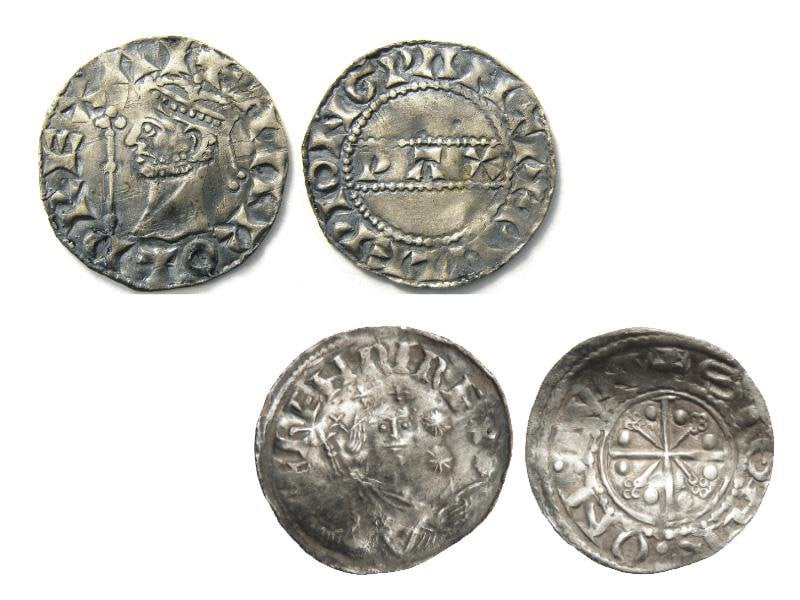Two British Teens Using Metal Detectors Discovered 1,000-Year-Old Coins
This summer, two British teenagers wielding metal detectors separately discovered a pair of rare, 1,000-year-old coins.
Per a statement from Hansons Auctioneers and Valuers, which is set to feature the coins in an upcoming sale, 17-year-old Reece Pickering unearthed a silver Saxon penny dated to 1066 while treasure hunting in Norfolk this August.

The following month, 16-year-old Walter Taylor—who first started metal detecting when he was 4 years old—found an 1106 silver penny in a field in South Essex.
“I wasn’t expecting to come across such a scarce and remarkable coin,” says Pickering in the statement. “… I can’t imagine finding something as special as this again. You just never know what’s beneath your feet.”
Pickering’s Harold II silver penny is one of just three known to survive today, reports Daniel Hickey for the Eastern Daily Press. It’s expected to sell for around £2,500 to £3,000 (roughly $3,290 to $4,000 USD).
Coins minted during Harold’s reign are scarce, as the Anglo-Saxon king only ruled for nine months. In 1066, William the Conqueror invaded England, defeating Harold at the Battle of Hastings and launching a century of Norman rule.
Demand for coins from Harold’s reign has increased since the Battle of Hastings’ 950th anniversary in 2016, according to Coin World’s Jeff Starck.
To commemorate the occasion, the United Kingdom’s Royal Mint released a 50-pence coin based on the famed Bayeux Tapestry, which shows Harold dying of an arrow to the head. (The accuracy of this depiction remains a point of contention.)

Pickering isn’t the only metal detectorist to stumble onto a Harold coin in recent years. In January 2019, a group of friends searching a field in Somerset discovered a trove of 2,528 coins featuring the likenesses of both Harold and his successor, William.
According to the British Museum, which was tasked with assessing the collection, the 1,236 Harold coins found outnumbered the collective amount known to previously exist by almost double.
Likely buried by a nobleman hoping to protect his wealth amid a volatile political environment, the money represented an early example of the seemingly modern practice of tax evasion.
Taylor, meanwhile, found a silver penny depicting Henry I—William’s youngest son—pointing at a comet, per James Rodger of Birmingham Live. Henry had the coin minted following his victory over his older brother, Robert Curthose, at Tinchebrai in 1106. The penny is expected to sell for around £3,000 to £3,500 (around $4,000 to $4,600 USD).
“I was constantly digging … but finding nothing,” says Taylor in the statement. “Then the register on my detector rose from 26 to 76. The coin was buried about four inches deep in the ground. I thought it was a silver penny but when I swiped the mud off it, I saw a face staring at me.”
Both coins—in addition to artifacts including an ancient Roman nail cleaner, a Viking brooch, and a gold half-crown coin minted toward the end of Henry VIII’s reign—will be on offer during an online auction hosted by Hansons on October 26 and 27. Proceeds from the coins’ sale will be split half and half with the landowners on whose property they were found.
